Fall Lawn Care Checklist for Murfreesboro, TN
BY KIMBERLY MAGERL | MAY 25TH, 2023 | LAWN CARE, MURFREESBORO, TENNESSEEPumpkin spice lattes, fans flocking to watch the Blue Raiders, and hiking trails full of changing fall leaves are just a few of the `Boro’s fall favorites. With temperatures in the 70s and college football just around the corner, the last thing you want to do is mow your lawn. However, successful spring lawn care begins in the fall, and September is a crucial month for fertilizer. Follow our fall lawn care checklist to maintain your lawn and prepare it for the winter playoff season.
In this article, we’ll cover:
- Dethatch Your Cool-Season Grass
- Aerate Your Cool-Season Turfgrass
- Test Your Soil
- Overseed Your Cool-Season Turfgrass
- Apply Fertilizer
- Apply Lime
- Mow Frequently
- Water Sparingly
- Treat Lawn Disease
- Control Weeds
- Rake Leaves
What Are the Benefits of Fall Lawn Care?
Residents love Tennessee’s mild autumns. The southern state is in the transition zone, and both warm and cool-season grass varieties grow well in its soils. Proper fall lawn care from September through November sets the foundation for your landscape during the winter months and spring green-up. Proper maintenance during these cool transition months helps your lawn grow deeper, stronger roots.
Fall lawn care benefits include:
- Stronger, deeper roots
- Easier spring green-up process
- Increased natural weed control
- Protect your lawn from disease
Fall Lawn Care Checklist for Murfreesboro
1. Dethatch Your Cool-Season Grass
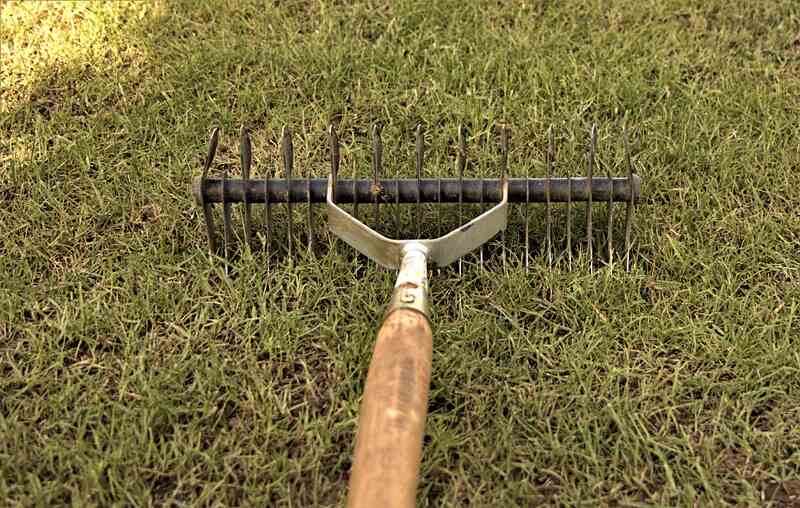
Photo Credit: Pixabay
Murfreesboro’s mild fall gives way to a short, cold, and wet winter, causing some cool-season grass cultivars and most warm-season grass cultivars to go dormant, developing thatch. Thatch is the tight, intermingled layer of dead grass, living grass blades, and roots that accumulate above soil level but below eye line visibility. Thatch insulates grass roots and makes your turfgrass more resilient, but too much of a good thing is a bad thing.
Dense thatch causes:
- Pests and disease
- Increased moisture and humidity
- Shallow root growth
- Restricted air, water, and nutrient penetration
Dethatch your lawn during its active growing season using a dethatcher, also known as a lawn scarifier. Watch for thatch that is a half inch or more thick, spongy turf, footprints, increased pest activity, and active diseases. Dethatchers work like a complex rake to remove thatch, bringing it to the surface of your lawn for collection. Always remove the loose layer of thatch immediately to avoid suffocating your turfgrass.
It is important to identify your grass variety. Tennessee cool-season grass cultivars like Kentucky bluegrass, fine fescue, tall fescue, and perennial ryegrass actively grow in the fall and early spring. Warm-season varieties such as bermudagrass, Zoysiagrass, and centipedegrass hit their green-up phase in late spring and summer. Dethatch your cool-season lawn in early fall and save your warm-season cultivar dethatching session for spring.
2. Aerate Your Cool-Season Turfgrass
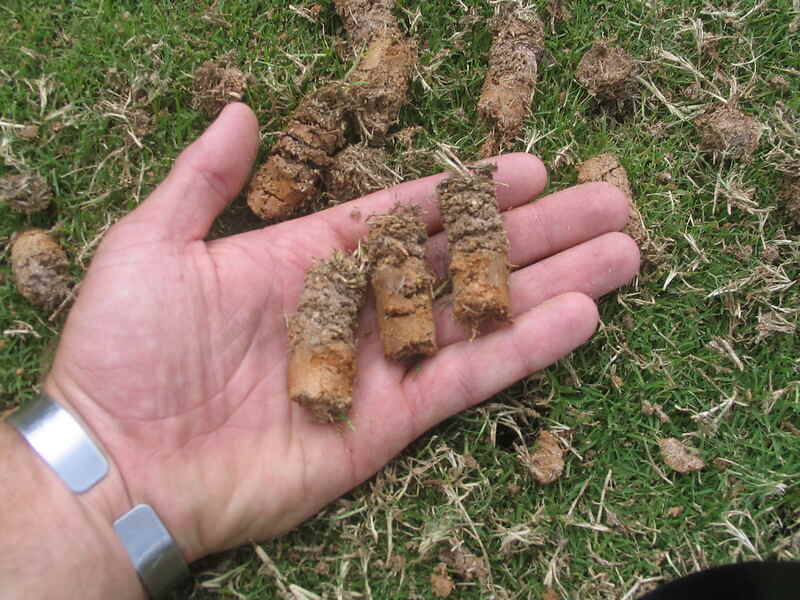
Photo Credit: Oregon State University / Flickr / CC BY-SA 2.0
Oxygen allows your turfgrass to establish deep roots and a dense appearance. Aeration is a common method to introduce this element back into struggling lawns with restricted root growth, allowing for water and nutrients to permeate more easily.
There are two types of common aeration: core aeration and spike aeration. Aim to aerate your Murfreesboro lawn to stimulate root growth following your dethatching schedule: early fall for cool-season varieties like fine fescue, tall fescue, Kentucky bluegrass, and perennial ryegrass and mid-spring to early summer for warm-season grasses like bermudagrass, Zoysiagrass, and centipedegrass.
Core Aeration
Core aerators extract cores of soil to create small holes so the soil can breathe. This method leaves leftover cores of soil on the surface of your lawn, adding beneficial nutrients and microorganisms to decrease thatch naturally.
Core aeration is the best method for the middle Tennessee region with its well-drained loam, limestone, or clay-based soils. These alkaline soils retain less moisture, heat more quickly, and have an abundance of phosphorus. Core aerators do a better job of breaking up sand or rock particles, reducing compaction, increasing air exchange, and improving water and nutrient access.
Spike Aeration
Spike aerators poke small holes in the ground with a rotating punch. This method does not remove material from the soil, so there is no chance of natural de-thatching.
3. Test Your Soil
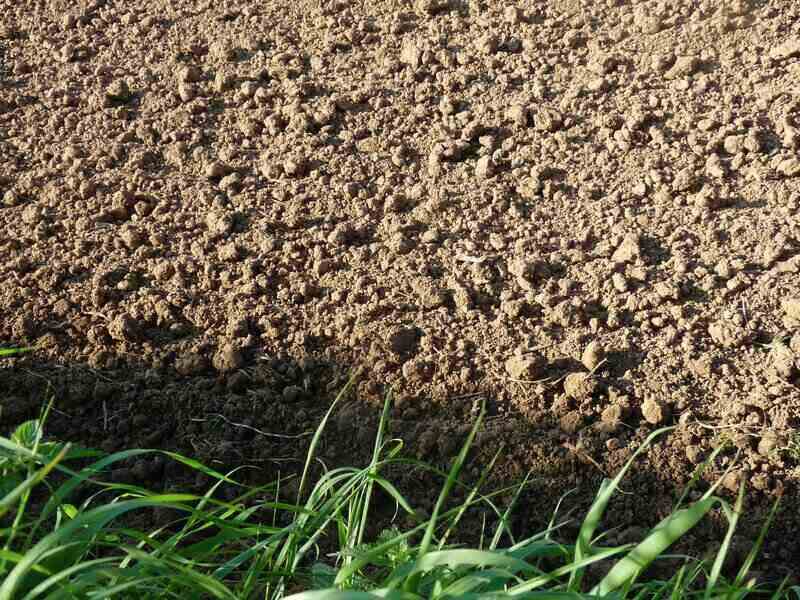
Photo Credit: PublicDomainPictures
Early fall is one of the best times to test your soil to ensure it has all the nutrients it needs to thrive. Middle Tennessee is home to many soil types and some are nutrient deficient. It is important to understand exactly what nutrients your grass is lacking. Murfreesboro homeowners should send in a soil sample for testing in September.
Simply send in a one-cup core sample to receive your results detailing amendments you can make to improve your soil. Common amendments include nitrogen, phosphorus, and potassium applications and lime for soil pH imbalances.
4. Overseed Your Cool-Season Turfgrass
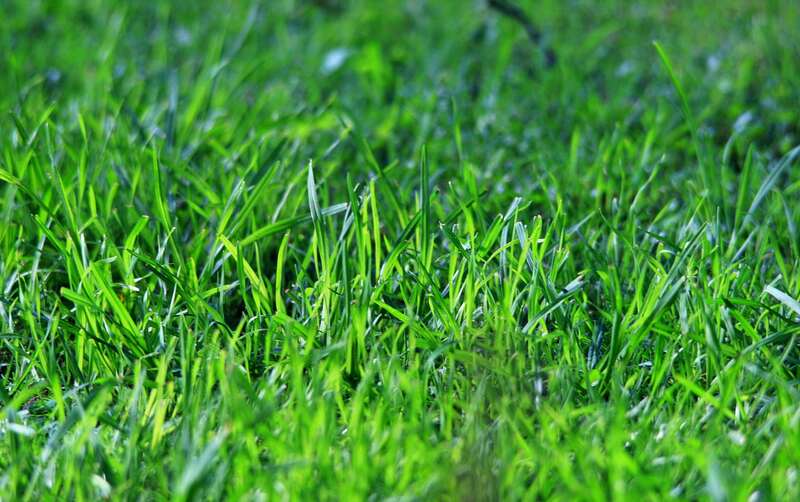
Photo Credit: PublicDomainPictures
Late summer and early fall are the best times to seed your cool-season lawn in Murfreesboro, while spring is the best time to seed warm-season cultivars. The active growing season encourages fresh growth, filling in thin and patchy areas.
Overseeding
Overseeding involves spreading new grass seed over existing turfgrass to fill thin areas. Kentucky bluegrass, tall fescue, fine fescue, and perennial ryegrass are cool-season cultivars that respond well to fall overseeding.
Prepare to seed your cool-season Tennessee lawn in late August or early September. Spread 0.5 to 1 pound of seed per 1,000 square feet.
5. Apply Fertilizer
Depending on your turfgrass cultivar, a fall fertilizer application promotes deep roots and sets your grass up for success during its fall green-up or winter dormancy period. Unfortunately, too much of a good thing can harm your landscape, so it is important to start with a soil test. The best time to apply fertilizer depends on your turfgrass cultivar, while the best type of fertilizer for your lawn depends on your unique soil sample test results.
Fertilizer comprises three primary nutrients: nitrogen (N), phosphorus (P), and potassium (K). Labels have three numbers, such as 5-10-5, which means the fertilizer contains 5% nitrogen, 10% phosphorus, and 5% potassium. Select a fertilizer ratio to satisfy your soil test results.
Cool-Season Turfgrass
Fall is the best time to fertilize cool-season grass cultivars like fine fescue, tall fescue, Kentucky bluegrass, and perennial ryegrass as they hit their active growing season. Apply 1 pound of nitrogen per 1,000 square feet of lawn on Sept. 1, Oct. 15, and Nov. 15 to improve root depth and turf density. Be sure to select a fertilizer that satisfies your soil test results with the proper N-P-K ratio.
Warm-Season Turfgrass
A fall fertilizer application helps warm-season turfgrasses like centipedegrass, Zoysiagrass, and bermudagrass resist winter weeds and improves turf color and spring recovery rates. Fertilize your warm-season lawn with 1 pound of nitrogen per 1,000 square feet of lawn around Sept. 1. Pay attention to the potassium and phosphorus needs on your soil test results and select a low-nitrogen, high-potassium or phosphorus blend, if needed.
6. Apply Lime
Lime is a fall soil amendment like fertilizer composed of limestone rock ground into powder. It contains calcium carbonate and magnesium carbonate. The addition of lime to your turfgrass increases nutrients and soil alkalinity, spreading beneficial bacteria. The ideal pH for your soil depends on the type of turfgrass in your landscape. Apply lime in September, October, or November if your soil test recommends it.
| Grass Type | Ideal pH Range |
| Bermudagrass | 6.0 – 6.5 |
| Centipedegrass | 5.0 – 6.0 |
| Fine Fescue | 6.0 – 6.5 |
| Kentucky Bluegrass | 6.0 – 7.0 |
| Perennial Ryegrass | 6.0 – 6.5 |
| Tall Fescue | 6.0 – 6.5 |
| Zoysiagrass | 6.0 – 6.5 |
7. Mow Frequently
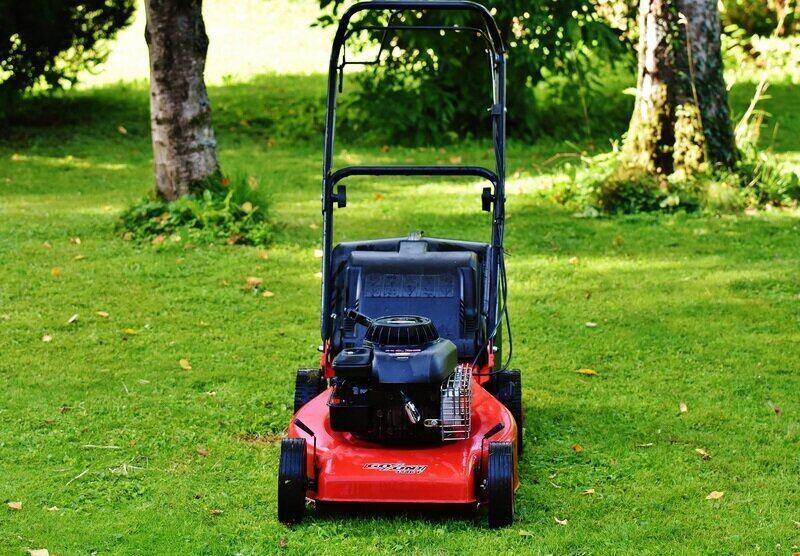
Photo Credit: PxHere
The `Boro’s subtropical climate and four distinct seasons make for interesting weather, especially in the fall. The city’s autumns are warm with a 49% chance of cloud cover and give way to short, wet, and cold winters. Your grass variety determines your unique mowing schedule and lawn height.
Unfortunately, it is tempting to mow your lawn short and make less work for yourself, but most grass types benefit from longer grass blades in the fall. Cutting your grass short leaves it vulnerable to injury, weeds, and cold stress. Taller grass blades develop deeper roots, setting your lawn up for winter success and a better spring green-up.
Warm-Season Turfgrass
Warm-season cultivars like bermudagrass, Zoysiagrass, and centipedegrass benefit from higher mowing heights in the fall to increase insulation and encourage deeper roots before winter.
Raise the height of your cut by a half inch in mid-September. Continue mowing through fall until the first frost. To avoid injuring your lawn, never mow low or scalp your lawn in the fall, and never remove more than one-third of the leaf blade.
You should mow every seven to 14 days within the recommended range for your grass type. Do not collect clippings unless you see large clumps on your lawn. Always aim to cut less, more often.
Cool-Season Turfgrass
Cool-season Tennessee grasses such as Kentucky bluegrass, tall fescue, fine fescue, and perennial ryegrass hit their active growth phase in the early fall after summer dormancy
Mow cool-season grasses to their recommended heights every seven days during fall. Aim to decrease mowing frequency to every 14 days in mid to late spring when growth has slowed.
| Grass Type | Recommended Mowing Height |
| Bermudagrass | 0.75 – 1.5 inches |
| Centipedegrass | 1 – 2 inches |
| Fine Fescue | 1.5 – 2.5 inches |
| Kentucky Bluegrass | 1.5 – 2.5 inches |
| Perennial Ryegrass | 1.5 – 2.5 inches |
| Tall Fescue | 2 – 3 inches |
| Zoysiagrass | 0.75 – 1.5 inches |
8. Water Sparingly
No matter what variety of turfgrass your lawn has, Murfreesboro lawns seldom need daily irrigating in the fall unless it is brand new. Water as needed early in the morning throughout fall. Winters in the `Boro are usually wet, providing more than enough precipitation for your plants and turfgrass.
You will know it is time to water your turfgrass when you notice a dark blue-gray color, footprinting, or wilted, folded, or curled leaves. Water all Tennessee turfgrass varieties twice per week if it hasn’t rained, aiming for a half inch of water per session to moisten the top 4 to 6 inches of soil and encourage deeper roots.
9. Treat Lawn Disease
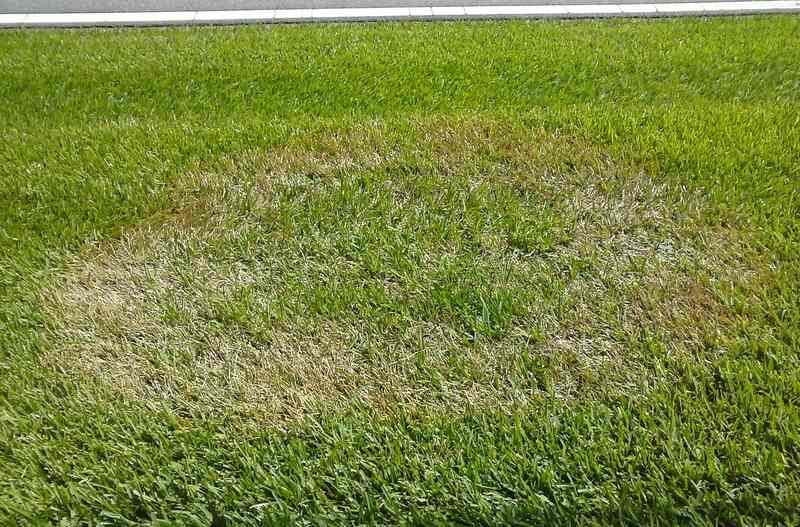
Photo Credit: Scot Nelson / Wikimedia Commons / CC0 1.0
Your best defense against lawn disease is routine maintenance, including watering, fertilization, and proper mowing heights. Tennessee’s mild fall temperatures and subtropical climate create the perfect environment for lawn diseases and fungi, including large patch, dollar spot, helminthosporium diseases, rust, nematodes, and stripe smut.
Large Patch
Large patch is a fungus that appears as brown, circular patches several feet in diameter. This disease affects bermudagrass, perennial ryegrass, and tall fescue. It does not respond well to fungicides. The most effective control and prevention method is proper lawn maintenance.
Monitor patches and improve drainage and air movement. Limit fertilization in affected areas and avoid over-watering.
Dollar Spot
Dollar spot is caused by a Tennessee soil-dwelling fungus that thrives in the warm, moist weather of spring and fall. It affects bluegrass, ryegrass, bermudagrass, and Zoysiagrass. Watch for circular brown or yellow spots that look like dollar coins.
Like most fungi, treat dollar spot with proper lawn maintenance. Maintain nitrogen levels by applying a nitrogen-based fertilizer and minimize moisture stress by ensuring proper drainage. Always water deeply and infrequently in the early morning to reduce foliage wetness.
Fairy Rings
Fairy rings, caused by mushroom or puffball-producing fungi, affect all Tennessee turfgrasses. Be on the lookout for an arc or ring of dead grass surrounded by healthy grass. Many infections also produce mushrooms or puffballs around the ring.
Like large patch, fairy rings do not respond well to fungicides. Till or remove the soil around the affected area and reseed for severe infestations. For mild infestations, remove thatch, aerate, and perform routine maintenance, ensuring proper irrigation.
Helminthosporium Diseases
Helminthosporium diseases affect all turfgrass species. Numerous fungi species cause these leafspot diseases, affecting grass blades, crowns, or roots. Watch for dark, circular lesions that expand to light-brown dead turf. Most diseases affect roots and crowns, causing turf thinning and fading, especially during cool, moist fall weather, but occur year-round in Murfreesboro.
Combat infections with proper lawn maintenance. Improve air circulation by removing thatch. Avoid fertilization and post-emergent weed killers while the disease is active. Monitor and fix drainage issues and avoid over-watering to prevent active and future infestations. Apply a fungicide at the first signs of infection.
Nematodes
Nematodes affect all Tennessee turfgrasses. These unsegmented roundworms need moisture to survive, and populations peak in the fall. The best prevention method is proper lawn maintenance to develop dense roots.
Watch for yellowing and thinning turf, especially during dry periods. Apply nematicides like Indemnify to affected areas alongside routine lawn maintenance and proper yard drainage.
Rust
Rust is a tissue-dwelling fungus affecting Kentucky bluegrass, perennial ryegrass, tall fescue, and Zoysiagrass. Spores germinate through moisture and dew, and active infections pop up throughout spring into fall. Be on the lookout for yellow flecks and raised areas on grass blades and thinning, wilting turf.
Treat rust using a fungicide, and prevent this Tennessee turfgrass disease with proper lawn maintenance. Improve drainage, reduce thatch buildup, and increase the time between irrigation sessions to minimize leaf moisture.
Stripe Smut
Stripe smut is a fungus affecting Kentucky bluegrass and tall fescue. It is a serious fall disease causing stunted root growth, stiff and erect leaf blades, and a yellow and brown appearance.
Once an outbreak occurs, smut fungus grows rapidly in fall temperatures around 70 degrees Fahrenheit. Treat the turfgrass disease with proper lawn maintenance, including infrequent but deep waterings and proper fertilization. Fungicide applications can help reduce active infections.
10. Control Weeds
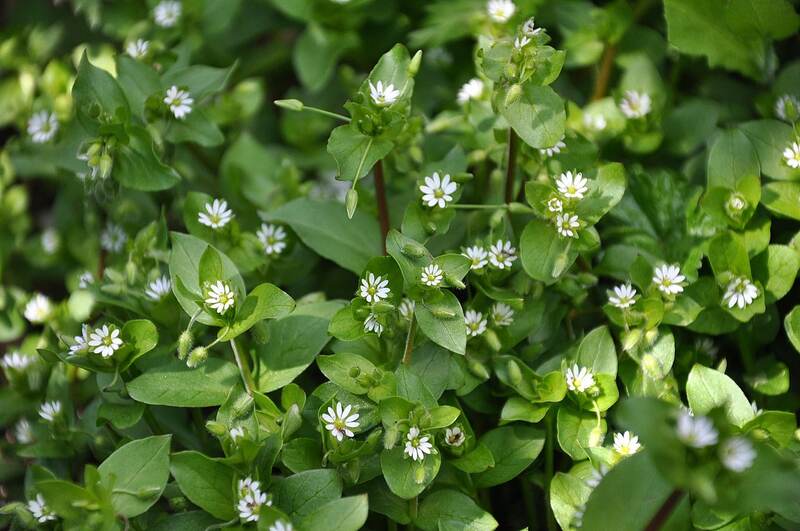
Photo Credit: Lazaregagnidze / Wikimedia Commons / CC BY-SA 4.0
Weeds love Murfreesboro’s subtropical climate. These pests signify an underlying problem with your lawn’s health, including low-nitrogen levels, imbalanced pH, and thinning turf. Weeds siphon vital nutrients, water, and sunlight from your turfgrass and spread pests and diseases. Two common methods of weed control include post-emergent and pre-emergent herbicides.
Pre-Emergent Herbicides for Grassy Weeds
All cool-season Tennessee turfgrasses, including tall fescue, fine fescue, Kentucky bluegrass, and perennial ryegrass benefit from a fall application of pre-emergent herbicide designed to kill seeds before germination. Additionally, both Zoysiagrass and bermudagrass benefit from a September pre-emergent herbicide application to control annual bluegrass, a common Tennessee weed.
While these herbicides will not control existing perennial weeds, they will help control the emergence of new winter annual and perennial broadleaf and grassy weeds.
Common winter grassy weeds in Murfreesboro:
- Annual Bluegrass (Poa annua)
- Mollugo (Galium mollugo)
- Nimblewill (Muhlenbergia schreberi)
- Quackgrass (Elymus repens)
Post-Emergent Herbicides for Winter Broadleaf Weeds
Post-emergent herbicides disrupt the growth of winter broadleaf weeds that become a nuisance during Murfreesboro falls. Always apply the herbicide directly to the active weed. Wait 30 days between applications, and never apply more than two applications per year.
Common winter broadleaf weeds in Murfreesboro:
- Chickweed (Stellaria media)
- Corn Speedwell (Veronica arvensis)
- Henbit (Lamium amplexicaule)
- Purple Deadnettle (Lamium purpureum)
- Shepherd’s Purse (Capsella bursa-pastoris)
11. Rake Leaves
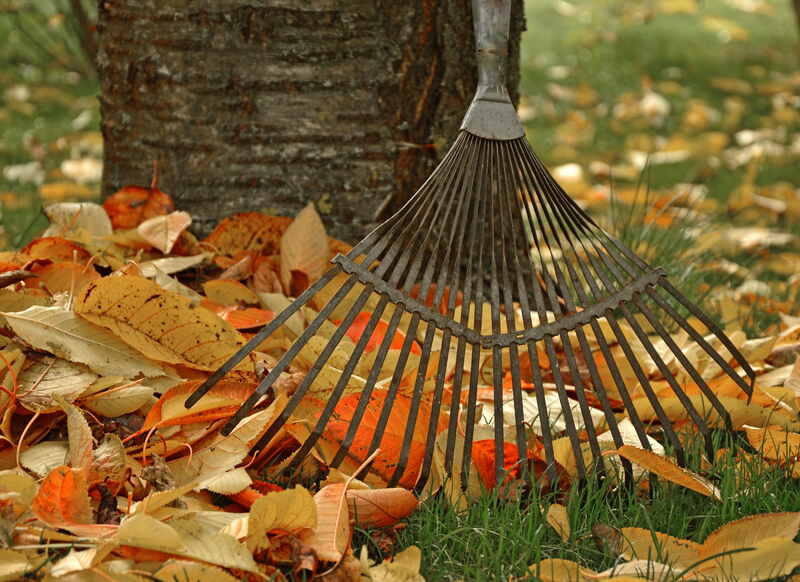
Photo Credit: Pxfuel
Locations with four seasons like Murfreesboro attract many homeowners with promises of warm summers, changing fall foliage, and a chance for a white Christmas. Watching leaves change from green to autumn gold, bronze, and red is something to look forward to as you sip your pumpkin spice latte and gear up for Friday night football. Unfortunately, the colorful leaves drop to the ground, creating a fluffy and crunchy layer over your lawn.
Leaves block out the sun, trap moisture, reduce airflow, and lead to dead spots of turfgrass. They increase pest problems and spread disease, so be sure to remove them as soon as possible. Wait until the leaves are dry to rake and prepare to rake your lawn before the first frost.
Be sure to remove the leaves and layer of thatch left behind. It does not matter if you rake as your leaves fall or wait until all the leaves in your yard have fallen.
FAQ About Fall Lawn Care in Murfreesboro
Most homeowners can stop mowing their warm-season Murfreesboro lawns in mid-October. These cultivars include bermudagrass, centipedegrass, and Zoysiagrass.
Homeowners with cool-season varieties, including Kentucky bluegrass, perennial ryegrass, tall fescue, and fine fescue, can typically stop mowing after the first frost in early December.
Warm-season turf gasses like bermudagrass, Zoysiagrass, and centipedegrass will go dormant during the end of fall and the beginning of winter. These cultivars dry out and turn brown.
The best way to determine if your grass is dormant is by pulling on it. If the grass comes out of the ground easily, it is likely dead. However, if there is resistance from deep roots when you pull on your grass, it is dormant.
No. While some homeowners overseed their warm-season grass with perennial ryegrass to maintain a year-round green lawn, it is not recommended for healthy warm-season turfgrass. The ryegrass slows spring green-up, competing with your warm-season turfgrass and stealing vital nutrients. It is best to allow your warm-season grass to enter natural dormancy during the cold winter months. Warm-season Tennessee turfgrasses include Zoysiagrass, bermudagrass, and centipedegrass.
Get Help With Your Fall Lawn Maintenance
Mild fall weather creates a prime environment for routine yard work that will set your lawn up to take on the wet, cold Tennessee winter and prepare it for a better green-up in the spring. Be sure to check out our spring lawn care tips to get a jump start on what you can expect from your long-term maintenance plan.
If you are short on time and would rather watch football or hit the trails, contact a Murfreesboro lawn care pro to help your lawn establish deep roots so it can survive the winter.
Main Image Credit: Tarpely Farm-Murfreesboro / rossograph / Wikimedia Commons / CC BY-SA 4.0